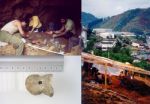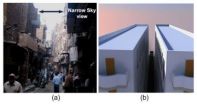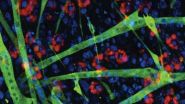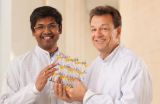(Press-News.org) Tobacco, a high-density crop which is mown several times throughout its cycle, can produce as much as 160 tonnes of fresh matter per hectare and become a source of biomass suitable for producing bioethanol. As Jon Veramendi, head of the plant Agrobiotechnology research group, explained, "tobacco plants as a source of biomass for producing bioethanol could be an alternative to traditional tobacco growing which is in decline in the USA and in Europe because it cannot compete with emerging countries like China".
In the course of the research, which has been echoed by the journal Molecular Breeding, tobacco plants of the Virginia Gold and Havana commercial cultivars have been grown. The plants were genetically modified to increase their production of starch and sugars, which contributes to the increase in ethanol production. The basis of this work is the PhD thesis by Ruth Sanz-Barrio, read at the NUP/UPNA last year. The researchers Imma Farrán, Jon Veramendi, Alicia Fernández-San Millán, María Ancín and Luis Larraya have participated in this work.
As Prof Veramendi explained, "what has been done now is fieldwork with these two tobacco cultivars and it has been found that the starch and sugars in the tobacco leaf are in fact higher." Traditional tobacco growing allows the plant to develop and the leaves to grow and get bigger, as the nicotine is synthesised when the plant is more mature. However, if the plants are used for producing biofuels, the researchers go for a higher-density crop similar to that of forage crops: "the tobacco plants are sown very close to each other and various mowings are made throughout the cycle. When the plant has grown to a height of about 50 cm, it is cut and the output is taken to the biomass processing factory. That way, it is possible to obtain up to 160 tonnes of matter per hectare over the whole cycle ".
What is more, when the tobacco is integrated into a biorefinery, it is possible to extract interesting by-products like proteins (they constitute up to 30% of the dry weight of the plant and are nutritionally more complete and have a greater protein efficiency rate than those from cow's milk or soya, so they could be used to feed humans or animals), solasenol (used to produce vitamins E and K) and xanthophylls (an additive in chicken feeds).
Over the last ten years, the surface area devoted to tobacco growing has been cut in Europe by 45%. In Spain, the main tobacco-growing area is Extremadura, followed by Andalusia. The researchers consider that one of the alternatives to the traditional use of tobacco could be to produce biofuel. From now on, high-density cultivation tests will need to be carried out to see whether the results obtained in the fieldwork, where the cultivated surfaces are very small, are confirmed.
INFORMATION: END
Genetically modified tobacco plants as an alternative for producing bioethanol
2014-04-14
ELSE PRESS RELEASES FROM THIS DATE:
Puget Sound's rich waters supplied by deep, turbulent canyon
2014-04-14
The headwaters for Puget Sound's famously rich waters lie far below the surface, in a submarine canyon that draws nutrient-rich water up from the deep ocean. New measurements may explain how the Pacific Northwest's inland waters are able to support so many shellfish, salmon runs and even the occasional pod of whales.
University of Washington oceanographers made the first detailed measurements at the headwater's source, a submarine canyon offshore from the strait that separates the U.S. and Canada. Observations show water surging up through the canyon and mixing at surprisingly ...
Study links domestic abuse to mental health problems in new mothers
2014-04-14
A new study shows that domestic abuse is closely linked to postpartum mental health problems, including depression and post-traumatic stress disorder (PTSD), in mothers. The research also found that specific types of abuse are associated with specific mental health problems. The work was done by researchers at North Carolina State University, Simon Fraser University and the University of British Columbia.
"We wanted to see whether and how intimate partner abuse – physical, psychological and sexual – influenced postpartum mental health in women, including problems such ...
Neanderthals and Cro-magnons did not coincide on the Iberian Peninsula
2014-04-14
This news release is available in Spanish. Until now, the carbon 14 technique, a radioactive isotope which gradually disappears with the passing of time, has been used to date prehistoric remains. When about 40,000 years, in other words approximately the period corresponding to the arrival of the first humans in Europe, have elapsed, the portion that remains is so small that it can become easily contaminated and cause the dates to appear more recent. It was from 2005 onwards that a new technique began to be used; it is the one used to purify the collagen in DNA tests. ...
Let the sun shine in: Redirecting sunlight to urban alleyways
2014-04-14
WASHINGTON, April 14—In dense, urban centers around the world, many people live and work in dim and narrow streets surrounded by tall buildings that block sunlight. And as the global population continues to rise and buildings are jammed closer together, the darkness will only spread.
To alleviate the problem, Egyptian researchers have developed a corrugated, translucent panel that redirects sunlight onto narrow streets and alleyways. The panel is mounted on rooftops and hung over the edge at an angle, where it spreads sunlight onto the street below. The researchers describe ...
Wolves at the door: Study finds recent wolf-dog hybridization in Caucasus region
2014-04-14
Dog owners in the Caucasus Mountains of Georgia might want to consider penning up their dogs more often: hybridization of wolves with shepherd dogs might be more common, and more recent, than previously thought, according to a recently published study in the Journal of Heredity (DOI: 10.1093/jhered/esu014).
Dr. Natia Kopaliani, Dr. David Tarkhnishvili, and colleagues from the Institute of Ecology at Ilia State University in Georgia and from the Tbilisi Zoo in Georgia used a range of genetic techniques to extract and examine DNA taken from wolf and dog fur samples as well ...
Regenerating muscle in Duchenne muscular dystrophy: Age matters
2014-04-14
LA JOLLA, Calif., April 11, 2014 — A team of scientists led by Pier Lorenzo Puri, M.D., associate professor at Sanford-Burnham Medical Research Institute (Sanford-Burnham), in collaboration with Fondazione Santa Lucia in Rome, Italy, have published details of how a class of drugs called "HDACis" drive muscle-cell regeneration in the early stages of dystrophic muscles, but fail to work in late stages. The findings are key to furthering clinical development of HDACis for Duchenne muscular dystrophy (DMD), an incurable muscle-wasting disease.
A symphony to rebuild muscle
The ...
New 'tunable' semiconductors will allow better detectors, solar cells
2014-04-14
One of the great problems in physics is the detection of electromagnetic radiation – that is, light – which lies outside the small range of wavelengths that the human eye can see. Think X-rays, for example, or radio waves.
Now, researchers have discovered a way to use existing semiconductors to detect a far wider range of light than is now possible, well into the infrared range. The team hopes to use the technology in detectors, obviously, but also in improved solar cells that could absorb infrared light as well as the sun's visible rays.
"This technology will also ...
A stable model for an unstable target
2014-04-14
A study in The Journal of General Physiology provides new insights about singlet oxygen and sets the stage for better understanding of this highly reactive and challenging substance.
Singlet oxygen is an electronically excited state of oxygen that is less stable than normal oxygen. Its high reactivity has enabled its use in photodynamic therapy, in which light is used in combination with a photosensitizing drug to generate large amounts of singlet oxygen to kill cancer cells or various pathogens.
Light-generated singlet oxygen also plays a role in a range of biological ...
Better solar cells, better LED light and vast optical possibilities
2014-04-14
Changes at the atom level in nanowires offer vast possibilities for improvement of solar cells and LED light. NTNU-researchers have discovered that by tuning a small strain on single nanowires they can become more effective in LEDs and solar cells.
NTNU researchers Dheeraj Dasa and Helge Weman have, in cooperation with IBM, discovered that gallium arsenide can be tuned with a small strain to function efficiently as a single light-emitting diode or a photodetector. This is facilitated by the special hexagonal crystal structure, referred to as wurtzite, which the NTNU ...
Pioneering findings on the dual role of carbon dioxide in photosynthesis
2014-04-14
Scientists at Umeå University in Sweden have found that carbon dioxide, in its ionic form bicarbonate, has a regulating function in the splitting of water in photosynthesis. This means that carbon dioxide has an additional role to being reduced to sugar. The pioneering work is published in the latest issue of the scientific journal PNAS.
It is well known that inorganic carbon in the form of carbon dioxide, CO2, is reduced in a light driven process known as photosynthesis to organic compounds in the chloroplasts. Less well known is that inorganic carbon also affects the ...






